The Champhone Loop encompasses a harmonious blend of breathtaking landscapes, distinct cultural experiences, and warm hospitality. Along this remarkable journey, there are countless activities and sights to engage in and explore. Some notable highlights include:
Natural Sites: Immerse yourself in the beauty of the region by visiting the awe-inspiring natural sites such as Wat Phoukor, That Kou, or the Monkey Forest. These locations offer captivating landscapes and a serene ambiance.
Cultural and Historical Exploration: Delve into the rich culture and history of the area by visiting Ho Taypidok, which holds the distinction of being the first library in Laos, or the Taleo Old Temple. These sites provide insights into the local heritage and offer glimpses into the past.
The following is a comprehensive list of activities and attractions available for you to discover and enjoy within the Champhone Loop:
Nonglamchan or Ho Taypidok - The first library in Laos
Renowned by its Lao name "Ho Taypidok," this serene destination holds a notable reputation for its wooden repository, where approximately 400 palm-leaf manuscripts are meticulously preserved and showcased within traditional cabinets.
In addition to the manuscripts, visitors can indulge in a cultural experience by exploring the museum, which houses an impressive collection of amulets and other noteworthy artifacts. Admire the architectural beauty of the meeting hall, characterized by its grand wooden poles. Furthermore, you can enjoy the tranquility of the pond and partake in the delightful activity of feeding the resident fishes. Take a leisurely stroll through the Buddha grove, allowing yourself to immerse in the peaceful ambiance and appreciate the spiritual surroundings.
At Ho Taypidok, these enriching experiences await, inviting you to delve into the cultural heritage and bask in the serenity of this remarkable site.
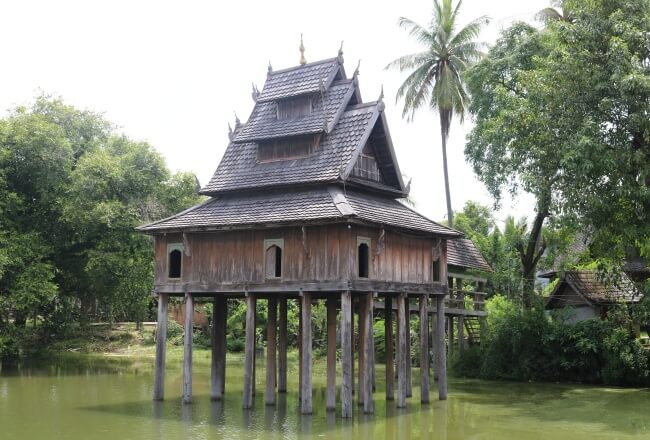
Taleo Old Temple
The Taleo Old Temple stands as a captivating and distinctive architectural marvel, renowned for its church-like structure and adorned inner wall frescoes. This magnificent temple also holds the remnants of a monastic school, adding to its historical significance.
Upon visiting this remarkable site, you will have the opportunity to explore a newly established museum, providing a deeper understanding of Taleo village's history during the American Secret War. Within the museum, you can discover intriguing exhibits and artifacts that shed light on the village's past. Notably, a captivating highlight includes a remarkable 3D wooden model showcasing the monastic school as it stood before its collapse, offering a glimpse into its former grandeur.
Immerse yourself in the rich history and architectural beauty of the Taleo Old Temple, as well as the engaging exhibits within the on-site museum. Prepare to be captivated by the stories and experiences that await you in this extraordinary place.
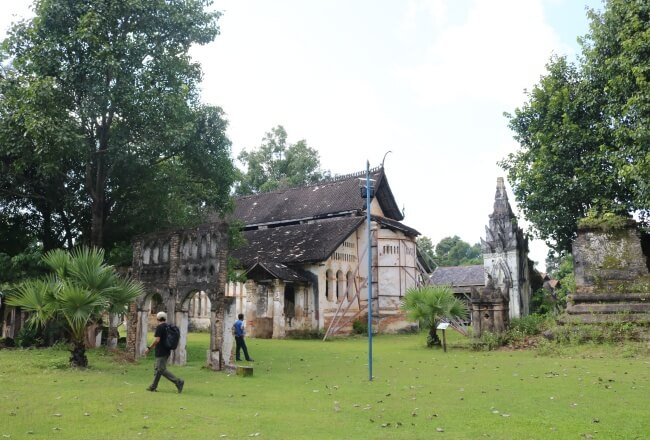
Monkey Forest
Span over 23 hectares, serves as a sanctuary for over 300 rhesus macaques, ensuring an unparalleled opportunity to observe these fascinating creatures up close. As you venture into the forest, you can engage in the unique experience of feeding the monkeys and witness their playful antics in the specially designed monkey playground.
In addition to the captivating primate encounters, the Monkey Forest offers an educational journey into its rich history. Discover the sacred significance of this forest and learn about the diverse plant species that thrive within its boundaries. Gain insights into how local villagers utilize these plants for various purposes, adding a cultural dimension to your exploration.
Moreover, equipped with binoculars, you can marvel at the sight of giant beehives within the forest, observing these impressive natural structures from a safe distance. Immerse yourself in the wonders of the Monkey Forest, where encounters with rhesus macaques, cultural insights, and natural marvels await at every turn.
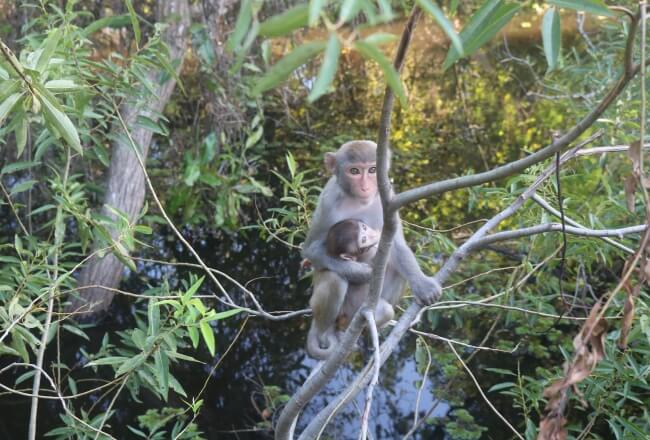
Turtle Lake
Nestled within its tranquil surroundings, Turtle Lake provides a sanctuary for the largest concentration of endangered soft-shell turtles in Laos PDR. Approximately 50 specimens thrive in this small lake, their existence safeguarded by the dedicated efforts of local villagers who hold them in high reverence due to their perceived sacredness.
While visiting Turtle Lake, you can witness these magnificent creatures from the vantage point of the bridge that leads to a stunning shrine resting on stilts. From this position, you can participate in the unique experience of feeding the turtles, further connecting with the natural beauty and significance of the site.
Additionally, nearby, you will find an opportunity to support the local community by purchasing Phutai handicrafts. Embrace the chance to acquire these artisanal creations, allowing you to take a piece of the region's culture and craftsmanship with you as a cherished memento.
At Turtle Lake, immerse yourself in the enchanting ambiance, interact with the sacred soft-shell turtles, and engage in the vibrant local community through their unique handicrafts. This memorable experience showcases the harmonious blend of nature, spirituality, and cultural appreciation that awaits you at this extraordinary location.
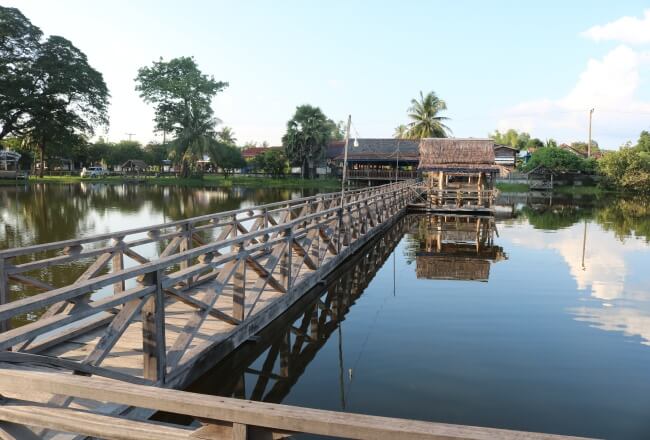
Soui Lake
Often referred to as the "Champhone Sea", Soui Lake stands as the largest reservoir within the Champhone district. This expansive body of water enables the cultivation of two rice harvests annually, resulting in picturesque green landscapes that grace the area from January to April and from May to November.
During your visit, indulge in a delightful dining experience at a floating restaurant, offering a chance to savor the renowned Soui snails and local fish delicacies. As you enjoy your meal, take in the serene surroundings of the lake, observing the skilled fishermen and graceful waterbirds that inhabit its waters.
For a truly immersive experience, consider embarking on a boat tour, allowing you to explore the sacred islands that dot the lake. This excursion provides an opportunity to appreciate the natural beauty of the area from a unique perspective while discovering the cultural significance associated with these sacred islands.
Soui Lake presents a captivating blend of culinary delights, serene landscapes, and cultural exploration, inviting you to relish the flavors, sights, and experiences that make this destination truly exceptional.
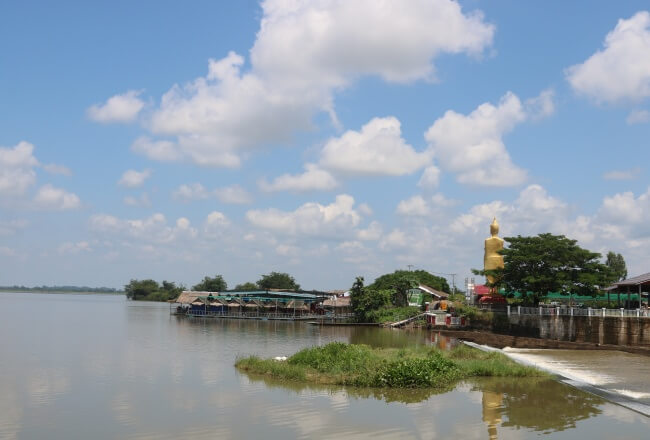
Wat Phoukor
Wat Phoukor, an extraordinary forest temple, boasts a unique architectural design that deliberately omits walls, fostering a harmonious connection between visitors and the surrounding nature as they engage in prayer and worship. The absence of walls allows individuals to immerse themselves in the tranquil ambiance of the temple while remaining in close communion with the natural environment.
As you wander through the captivating forest that envelops Wat Phoukor, you will encounter numerous statues portraying scenes from Buddhist hell and renowned Lao tales. These intricate and thought-provoking sculptures provide insights into both spiritual realms and the rich cultural heritage of Laos, offering a profound glimpse into the beliefs and folklore of the region.
Allow yourself to be captivated by the serene atmosphere and the profound symbolism that permeates Wat Phoukor. This exceptional temple invites you to forge a deep connection with nature, while simultaneously exploring the artistic expressions and spiritual narratives woven into its very fabric.
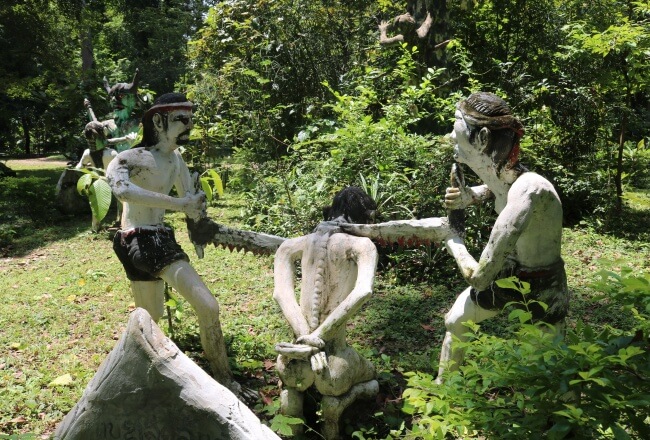
That Kou
That Kou stands as a captivating testament to the rich historical legacy of the ancient Khmer Empire in Laos. It is among the remarkable ruins of pre-Angkorian constructions that dot the landscape, serving as a profound reminder of the region's cultural and architectural heritage.
Dating back to the early second millennium, That Kou was constructed using impressive lava stones, showcasing the exceptional craftsmanship and engineering prowess of its time. Originally, it functioned as a Hindu shrine, embodying the religious beliefs and practices prevalent during that era.
As you explore the ruins of That Kou, you will be transported back in time, immersing yourself in the echoes of the past and envisioning the grandeur that once adorned this sacred sanctuary. The remnants of this ancient site bear witness to the enduring influence of the Khmer Empire and offer a glimpse into the rich tapestry of history that shaped the region.
Immerse yourself in the enchanting aura of That Kou, marvel at the architectural splendor crafted from lava stones, and reflect upon the spiritual significance it held as a Hindu shrine during its illustrious past. This ancient ruin invites you to embark on a journey of discovery, as you uncover the secrets and unravel the mysteries of the Khmer Empire in Laos.
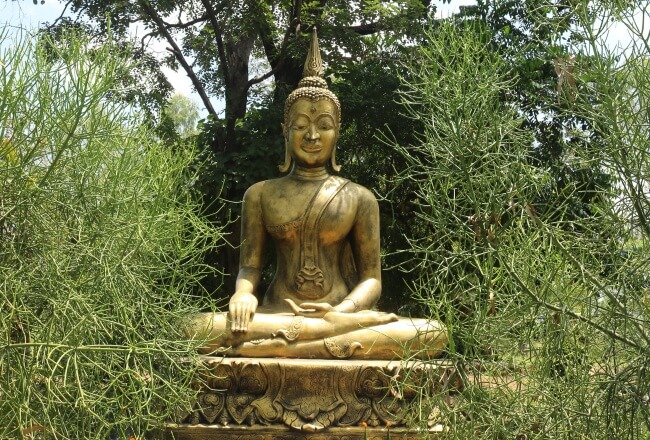
Crocodile Watching
For an exhilarating wildlife experience, a visit to the Croc Center in the Tansoum village temple is a must. This unique establishment serves as a hub for crocodile watching, offering visitors the opportunity to observe these fascinating creatures up close.
Situated within the heart of the wetlands, the Croc Center serves as a focal point for boat tours and other tourist activities, facilitated by the WCS (Wildlife Conservation Society) project. Immerse yourself in the natural splendor of the wetlands as you embark on a guided boat tour, navigating the waterways to witness the captivating presence of crocodiles in their natural habitat.
In addition to crocodile watching, the Croc Center is poised to offer an array of tourist services and activities, ensuring an engaging and educational experience for visitors. Benefit from the expertise and efforts of the WCS project, as they work towards the conservation and preservation of these remarkable wetlands.
Prepare yourself for an unforgettable adventure at the Croc Center, where you can delve into the world of crocodile watching, explore the breathtaking wetlands, and support the valuable conservation efforts of the WCS project.
Workshops at the local villages
As you journey along the loop, you will discover abundant opportunities to visit local villages and engage in workshops that provide insights into traditional activities. These immersive experiences allow you to deepen your understanding of the local culture and heritage.
One such workshop entails traditional weaving, where you can witness the intricate craftsmanship behind creating exquisite textiles. Learn about the techniques passed down through generations and appreciate the skill and precision required to produce these traditional woven fabrics.
For a unique encounter, consider exploring the world of grasshopper farming. Discover the fascinating practices involved in cultivating these creatures and gain insights into their significance within the local community.
Another captivating workshop revolves around natural dying, where you can delve into the art of using natural materials to create vibrant and sustainable dyes. Uncover the secrets of extracting colors from plants and witness the transformation of fabrics through this traditional dyeing process.
Additionally, you can delve into the realm of Lao Khao traditional distillery, delving into the craft of producing this renowned rice-based alcoholic beverage. Learn about the intricate distillation techniques employed by local artisans and gain a deeper appreciation for this traditional spirit.
By participating in these workshops and engaging with the local communities, you not only gain hands-on knowledge of traditional activities but also contribute to the preservation of these cultural practices. Immerse yourself in the rich tapestry of local traditions and expand your horizons through these captivating workshops along the loop.
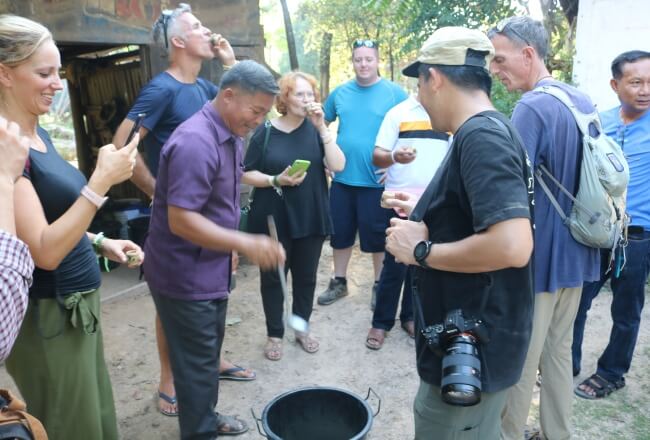
Contact us for further details.



 04/01/2026
04/01/2026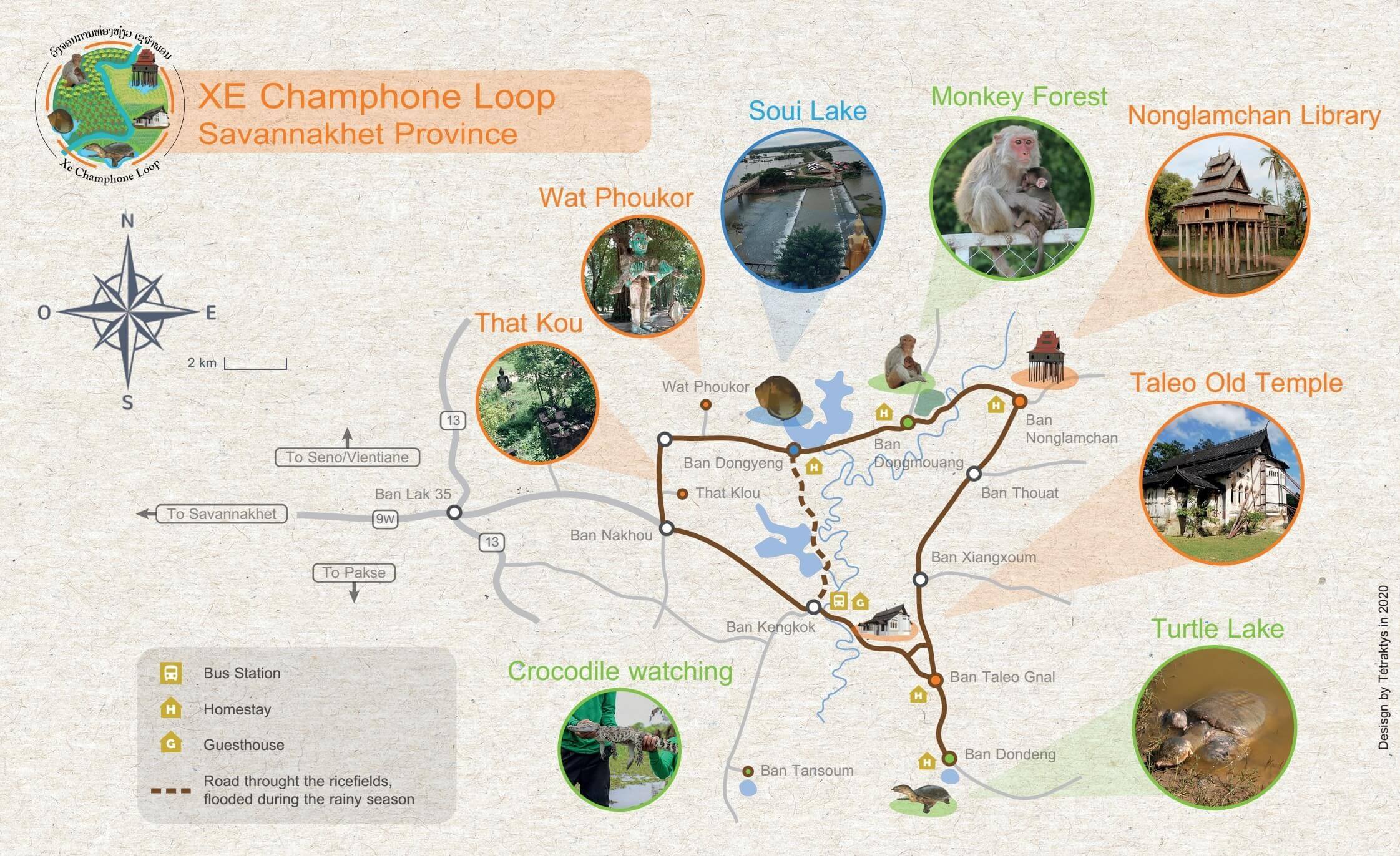
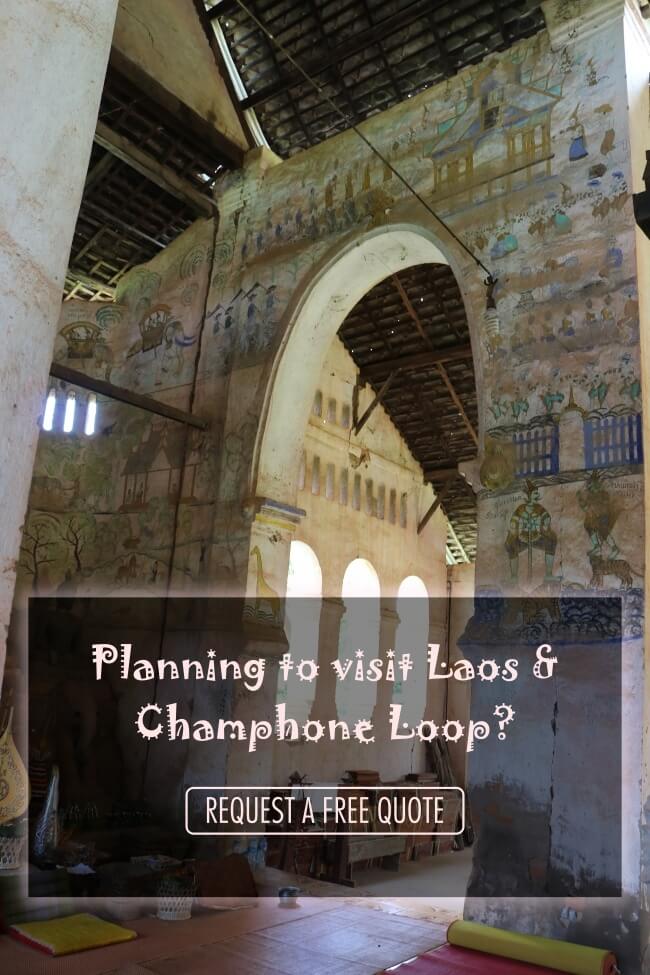
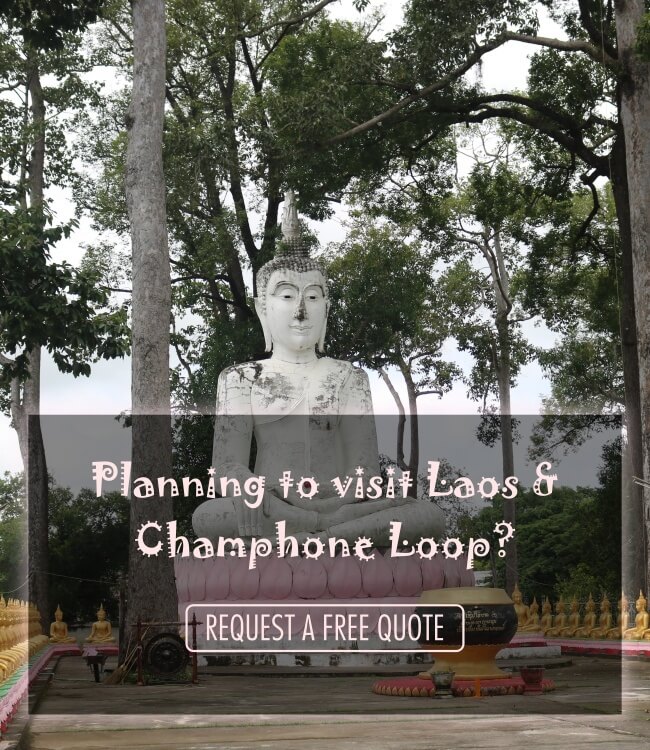
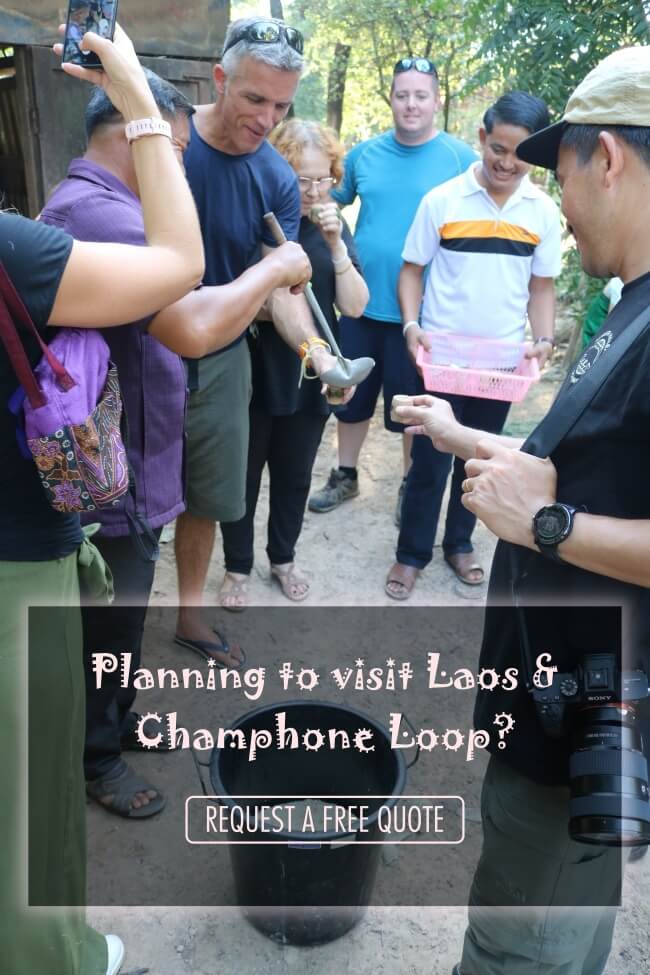
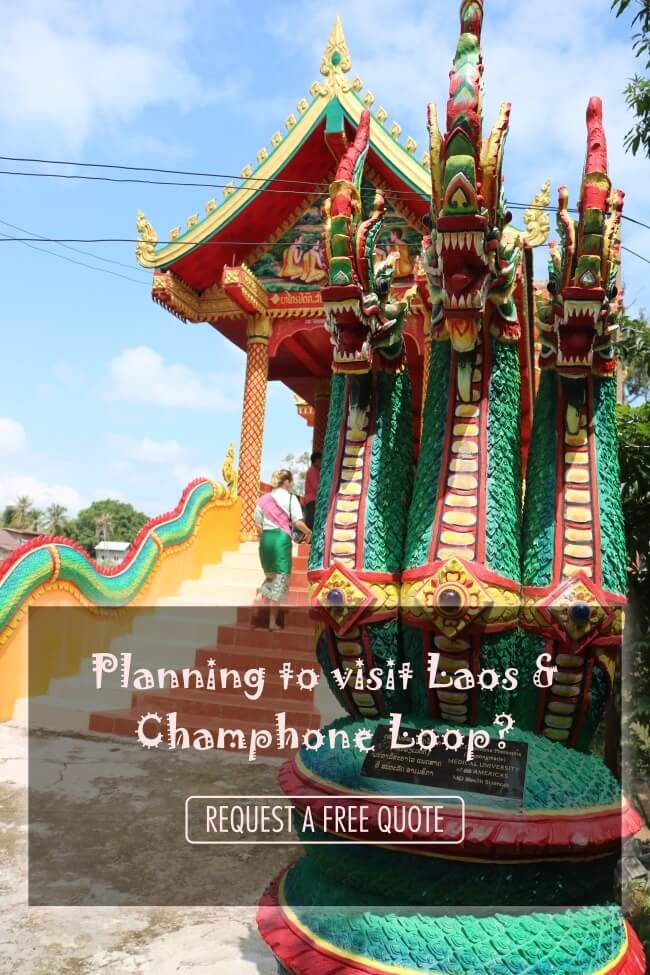

















Jordan VituHello, my name’s Jordan and I’m obsessed with travelling overland. Seeing how cultures change while travelling slowly captivates me; and doing so in an eco-friendly way, preserving the cultures and landscapes that so many travellers yearn to explore, has given me my travelling purpose.